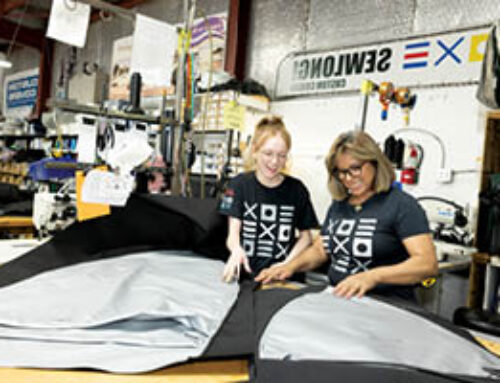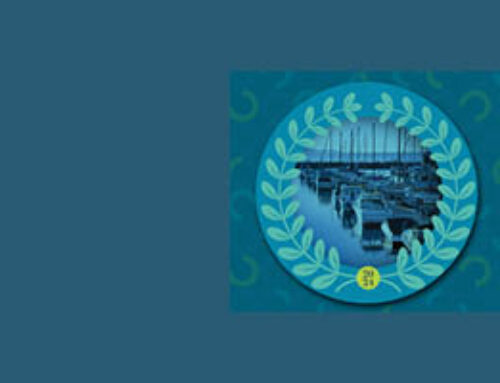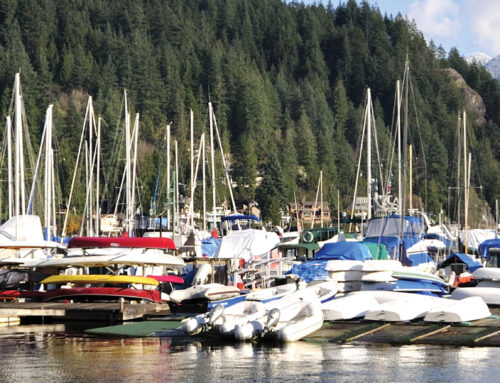Investing in equipment
Making a significant equipment purchase can be a daunting task, but many financing options exist to help improve operations, stay competitive and realize the return on your investment.
By Holly O’Dell
One look around the shop, and business owners are faced with constant reminders of necessary improvements, such as tools that need to be replaced or machinery that needs an overhaul. They know the reality of the situation: Update or fall into oblivion.
“Growth depends on a company’s ability to remain competitive, which often means relying on equipment purchases to produce revenue and provide ways to differentiate themselves from competition,” says Melissa Soupir, account manager for Lease Finance Group Inc., an equipment finance company based in Eden Prairie, Minn.
While it sounds ideal—and logical—to make such an investment in their companies, business owners face a number of concerns and questions as they consider major purchases. Fortunately, many resources exist to help you determine the right time to make a purchase, the types of financing options available and how to gauge the return on your capital investment to ensure that you’re getting the most from your big-ticket purchase.
Determining when to buy
The reasons for purchasing new equipment range widely, from badly needed basic equipment upgrades to seeking out whole new markets. Before embarking on the purchasing process, companies should gauge not only why they need an item, but also what they expect to get out of it. After all, a capital investment is money intended for fixed assets that are expected to drive revenue and even decrease costs over the long term.
Of course, all your pros and cons are for naught if you don’t have a grasp on your company’s financial position. The best starting point is often the balance sheet, as Don Smallwood can attest. Smallwood’s company, ABC Sun Control LLC in North Hollywood, Calif., makes major purchases every year. Most recently, ABC acquired two fabric welding machines, with two more scheduled for delivery this year. Smallwood has also purchased cantilever and pallet racking. In addition, the shop’s size increased by 55 percent, which required the purchase of additional saws, tables and awning racks.
None of this growth would be possible without a thorough examination of the balance sheet, Smallwood maintains. “You see what you have in the bank, what upcoming and ongoing liabilities you have, and then determine the availability of free funds,” he explains. “We can dividend those out or make investments. If we dividend them out, we pay taxes. If we make an investment to the extent that we can expense it, we pay no taxes on it.”
Another consideration before making a major purchase is the need to conduct a financial analysis, which matches total costs against total benefits. “Companies can determine if certain equipment purchases will add value to the firm by utilizing various calculation methods, such as the payback period, or through an analysis of the net present value or internal rate or return of a project’s cash inflows and outflows,” Soupir says.
How to finance your purchase
Once you’ve performed a detailed analysis of your equipment needs and your financial position, the next step is to determine how you’ll be financing your purchase. Companies can choose to purchase out of pocket, or through a loan or a lease. And just as business owners review their capital investment requirements before making a big purchase, they also should examine which financing method is right for them. A significant part of this review should include a consultation with your accountant, who can determine the tax benefits of each financing approach.
For his company’s purchases, Smallwood always pays cash. “We pay for our equipment out of internally generated funds,” he says. “With the tax laws the way they are, we can expense the majority of our investments. Also, we are not incurring any interest charges.”
Greg Schmieler, vice president of Laurel Awnings Co. in Apollo, Pa., has been paying cash for assets since he and his family purchased the company in 2001. In the past year alone, Laurel Awnings has bought four new trucks, a grommet machine, welding equipment and cutting equipment. Schmieler saves up throughout the year in order to pay out of pocket for the company’s purchases. “I don’t believe in off-balance-sheet transactions,” he says. “It’s my asset that I get to depreciate. You don’t have to carry insurance on it. When you own the equipment, it’s yours. You can do with it what you want.”
Loan ranges
Financing through either a loan or a lease is another option. Of the $1.1 trillion invested in plants, equipment and software in 2006, 55 percent—or $600 billion—is financed through loans, leases and lines of credit, according to a study released by the Equipment Leasing and Finance Association.
Loans are available through finance companies that specialize in equipment and banks, though the latter may prove to be more challenging, depending on the equipment you’d like to acquire. As with using cash for a purchase, companies who go the loan route can take advantage of tax depreciation, says Ken Turner, senior vice president of sales for Key Equipment Finance in Superior, Colo. “For some companies, their primary financial goal is to pay as little tax as possible,” he explains. “They’ll want to own the equipment because they get the depreciation, which reduces their tax burden. That’s one way companies manage their P&L.”
Companies may consider financing major assets through a loan if they plan to hold onto the equipment for many years. “If it’s equipment that lasts for a very long time, oftentimes companies will choose to own it because they will use it long after it’s paid for,” Turner says. “In those cases, a loan may be the most financially astute decision.”
Leasing advantages
Another popular equipment finance vehicle is the lease, which offers many fiscal benefits to companies, according to Soupir. “Leasing is a budgeting tool to better control cash positions and financial stability,” she says. “Managers and business owners can assess the cash inflows of a project and choose a lease term and structure that best matches those inflows.”
“The number one reason why people choose a lease over a loan is that their payments are lower because over the term of the transaction, they’re only paying for the amount of the lease less the residual,” adds Turner. Furthermore, leasing “generally allows companies to finance a higher percentage of an equipment purchase with its related costs, including software, installation and training,” Soupir notes. “Also, a lease generally requires only one to two advance payments.” Companies like Lease Finance Group offer customers a variety of payment plans, including seasonal, deferred, monthly, quarterly, semiannual or annual. Different types of leases can offer different accounting and tax treatment.
When they know that their equipment will need regular upgrades, companies find leasing beneficial. “Another reason people lease is technical obsolescence,” Turner says. “They’ll say, ‘I don’t want to own something in three years because it’s not going to be the most current equipment. Three years later when the new equipment is out, I can swap out my old equipment, and many times I can continue at a very similar payment.’”
Alternatively, many manufacturers offer financing of their own products. Anchor Industries of Evansville, Ind., for one, has been providing leasing options on its tents since 1986. The availability of this service has proven valuable for clients, particularly given the nature of the tent-rental industry, says Bill Riat, vice president of credit for Anchor. “The theory is that the equipment pays for itself,” he explains. “A tent is an asset you rent out, and it produces cash.”
Regardless of whether businesses seek a loan or a lease, finance companies can also help their customers determine the length of financing. “You want to look at the equipment and determine when it’s going to wear out,” Riat advises. “Each product has its own lifecycle, and you wouldn’t want to go any further than that. You really want to know when it’s going to pay for itself.”
Measuring ROI
When it comes to making capital investments, business operators expect a solid return. Factors such as weighted average cost of capital (WACC), borrowing rate and tax rate are often taken into consideration when realizing return on investment (ROI). In ABC Sun Control’s case, Smallwood reviews a couple of factors when gauging ROI. “First, we consider the expected payback, as well as how long it is going to take to get the money back that we invested in the equipment,” he says. “The second area we look at is what is this going to do in terms of quality of the product, and whether there is a significant quality improvement over the methods that we were using prior to the acquisition.”
At Laurel Awnings, Schmieler reviews elements such as the amount spent on repairs on current equipment, how much money could be saved over a certain number of years and what efficiencies can be gained by making a significant investment. “I buy all equipment on a five-year return on investment,” he says. “Our most recent purchase was a brand new welder, which replaced two older welders that were on their last legs. It was a sound financial decision for the company.”
Beyond improved efficiencies, Laurel Awnings has experienced a great benefit that doesn’t necessarily have a figure attached to it. “The investment in the company proves to the employees that the owners care and aren’t just letting things languish,” Schmieler says.
 TEXTILES.ORG
TEXTILES.ORG 






